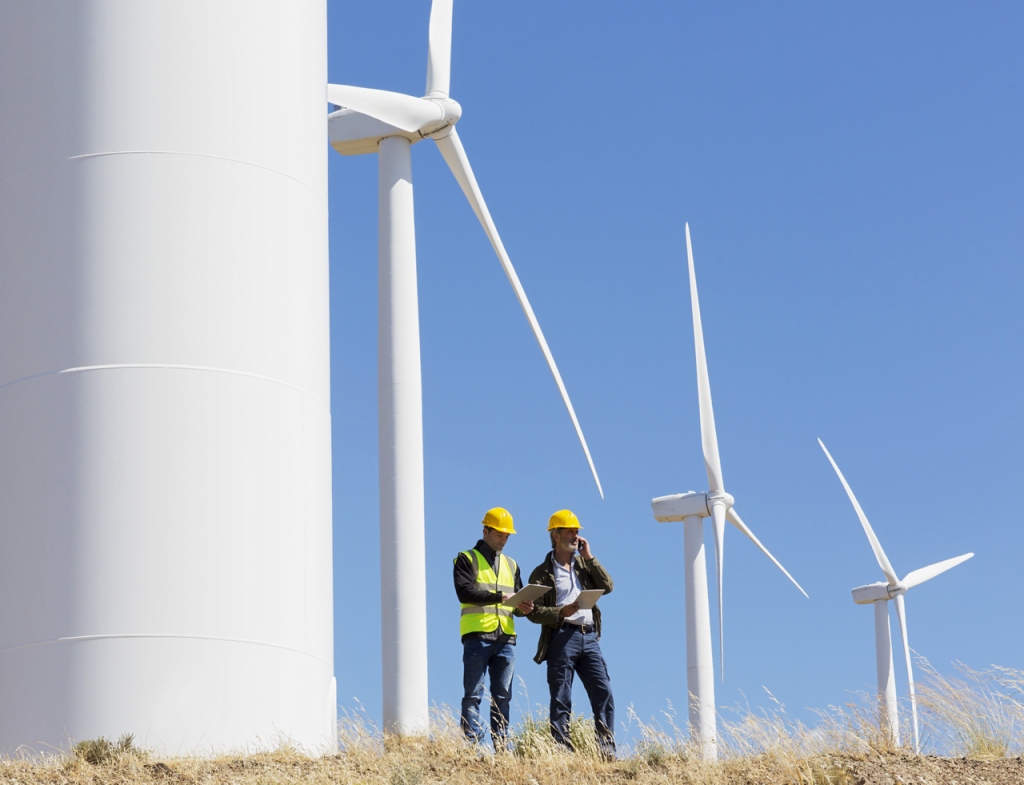Introduction
The global transition to clean energy is progressing at an unprecedented pace, fueled by concerns over climate change, technological advancements, and shifting public and governmental priorities. This transition is shifting the balance of power in energy markets, and as renewable sources like wind, solar, and hydrogen become increasingly dominant, traditional sectors that have long been reliant on fossil fuels are facing significant challenges. These industries must adapt to survive in a rapidly changing environment.
This article explores the acceleration of the global energy transition and examines which traditional industries will be most affected by the rise of clean energy solutions. The impact of this shift will vary by sector, but industries closely tied to fossil fuels, energy generation, and transportation will likely experience the greatest disruptions.
1. The Global Energy Transition: An Overview
The transition to cleaner energy sources is being driven by several key factors:
- Climate Change Mitigation: As the world grapples with the realities of climate change, countries are increasingly setting ambitious targets to reduce greenhouse gas emissions. International agreements such as the Paris Agreement have spurred governments to take aggressive action, promoting the adoption of renewable energy and energy-efficient technologies.
- Technological Advancements: The development of more efficient renewable energy technologies, such as solar panels, wind turbines, and battery storage systems, has made clean energy sources more viable and cost-effective. This is accelerating the shift away from coal, oil, and natural gas.
- Government and Corporate Policy Shifts: Governments worldwide are imposing stricter regulations on emissions and offering incentives for clean energy adoption. Corporate sustainability pledges are also pushing industries to reduce their carbon footprints, further accelerating the shift towards a low-carbon economy.
While the energy transition presents vast opportunities for innovation and growth, it also brings about significant challenges for traditional industries that have long relied on fossil fuels and carbon-intensive processes.
2. Industries Facing the Greatest Challenges
2.1 The Fossil Fuel Industry (Oil, Gas, and Coal)
The fossil fuel industry, encompassing oil, natural gas, and coal, is by far the sector most impacted by the energy transition. As renewable energy technologies continue to mature, fossil fuel-based energy generation is becoming increasingly obsolete. Several factors contribute to the mounting challenges faced by this industry:
- Declining Demand for Coal: Coal has been one of the biggest contributors to global greenhouse gas emissions, and it is facing a dramatic decline in demand as countries move towards cleaner energy sources. The International Energy Agency (IEA) projects that coal use will continue to decline sharply, particularly in developed economies like Europe and North America, which are rapidly transitioning to cleaner energy systems.
- Oil and Gas in a Low-Carbon Future: While oil and natural gas remain critical components of the global energy mix, their role is expected to diminish over time. Many countries have pledged to phase out internal combustion engine vehicles (ICEVs) in favor of electric vehicles (EVs), reducing demand for gasoline and diesel fuels. Additionally, pressure to curb emissions from industrial and power generation sectors is expected to reduce natural gas consumption.
- Investment and Financial Pressure: Fossil fuel companies are under increasing pressure from investors, regulators, and environmental groups to transition toward cleaner business models. Many major banks and investment funds have started divesting from fossil fuel assets in favor of greener investments, making capital harder to secure for traditional energy companies.
- Stranded Assets: As governments enact stricter climate policies, fossil fuel assets—such as coal mines, oil reserves, and gas fields—could become “stranded assets,” meaning they will lose their economic value. This presents a financial risk for companies that rely heavily on fossil fuel reserves.
For the fossil fuel industry, the global energy transition presents an existential challenge. Many companies are pivoting toward renewables and carbon capture technologies to mitigate the risks, but the road ahead remains uncertain.
2.2 The Automotive Industry (Traditional Internal Combustion Engine Vehicles)
The automotive industry is undergoing a fundamental transformation, driven by the rise of electric vehicles (EVs) and changes in consumer demand. The rapid development of EV technology, along with supportive government policies, is putting pressure on automakers that are still heavily reliant on internal combustion engine vehicles.
- Electric Vehicle Adoption: EVs are growing rapidly in popularity, driven by consumer concerns about climate change, lower operating costs, and increasing government incentives. As countries like the EU, China, and the U.S. set ambitious targets to phase out gasoline-powered vehicles by the 2030s, traditional automakers face significant pressure to accelerate their shift towards electric mobility.
- Disruption of the Supply Chain: Traditional automotive supply chains, which have been built around internal combustion engines and their components, will need to undergo a massive overhaul. The transition to EVs requires new manufacturing processes, a different set of raw materials (e.g., lithium, cobalt), and a retooling of production lines, all of which present substantial financial and logistical challenges.
- Competitor Threats: Traditional automakers face fierce competition from new entrants in the EV space, including Tesla, Rivian, and other startups that focus exclusively on electric mobility. These companies, unencumbered by legacy infrastructure and business models, are able to move quickly and innovate at a faster pace than their traditional counterparts.
- Stranded Assets in Fossil Fuel Vehicles: Companies that rely heavily on internal combustion engines face the risk of having significant assets become stranded as the market for gasoline-powered vehicles shrinks. This could lead to financial instability for companies that fail to adapt quickly.
For automakers that continue to focus on traditional vehicles, the transition to a low-carbon future is a monumental challenge. The shift to EVs is not just a technological change, but a fundamental reorientation of the entire industry.

2.3 The Heavy Industry and Manufacturing Sector
Heavy industries such as steel, cement, and chemicals are among the most carbon-intensive sectors globally. These industries are facing increasing pressure to reduce emissions, but decarbonizing their processes will be challenging for several reasons.
- Energy-Intensive Processes: Steel and cement production, for example, rely on energy-intensive processes that emit large amounts of carbon dioxide. While advancements in alternative production methods, such as hydrogen-based steel production and carbon capture technologies, are being explored, these technologies are still in the early stages and are expensive to implement at scale.
- Transitioning to Green Production: For heavy industries, transitioning to low-carbon technologies requires massive investments in new equipment, research, and infrastructure. The costs associated with this transition are substantial, and many companies may struggle to secure the necessary capital, particularly in the face of heightened competition from global players who are already making strides in decarbonization.
- Regulatory Pressures: Governments are increasingly adopting stricter environmental regulations and carbon pricing mechanisms, which are making it more expensive for traditional manufacturers to operate. In Europe, the European Union Emissions Trading System (EU ETS) and similar policies have raised the cost of carbon emissions, forcing heavy industries to invest in cleaner alternatives.
- Competitive Disadvantage: Countries with more ambitious decarbonization targets may see their industries become less competitive compared to those in regions with lax environmental regulations. This could lead to “carbon leakage,” where manufacturing moves to countries with less stringent environmental standards, potentially undermining global climate goals.
The heavy industry and manufacturing sector faces an uphill battle in transitioning to a low-carbon economy. However, companies that invest in innovative solutions like green hydrogen, carbon capture, and electrification will be better positioned to succeed in the future.
2.4 The Utilities Sector (Fossil Fuel-Based Power Generation)
The utilities sector is also undergoing a significant transformation. Historically, utilities have been dependent on coal, natural gas, and oil to generate electricity. However, renewable energy sources such as solar, wind, and hydroelectric power are becoming more cost-competitive, posing a challenge to traditional power generation companies.
- Renewables Replacing Fossil Fuels: The decline in the cost of solar and wind energy is making renewable energy the preferred choice for new power generation capacity. According to the IEA, renewable energy is expected to account for almost 90% of global power sector growth over the next five years. This rapid shift is putting pressure on utilities that have built their business models around fossil fuel plants.
- Grid Modernization and Energy Storage: As renewable energy becomes more widespread, utilities will need to invest in grid modernization and energy storage systems to handle the intermittency of solar and wind power. This represents a significant challenge, as traditional utilities are often ill-equipped to manage the complexities of decentralized and intermittent power generation.
- Stranded Assets in Fossil Fuel Plants: Utilities with large investments in coal and natural gas power plants are at risk of seeing those assets become stranded as demand for fossil fuel-based power declines. This can lead to significant financial losses, particularly for companies that are slow to adapt to the clean energy transition.
Utilities that fail to diversify their energy portfolios and embrace the shift to renewables and energy storage may find themselves at a competitive disadvantage in the years to come.
3. Conclusion
The global energy transition is accelerating, and traditional industries that have been built around fossil fuels and carbon-intensive processes are facing significant challenges. The fossil fuel industry, automotive sector, heavy industry, and utilities are all undergoing transformations that will require massive investments, technological innovation, and policy adaptation.
While the energy transition presents substantial challenges for these sectors, it also offers opportunities for companies that are proactive in adapting to new technologies and business models. The industries that successfully navigate this transition will be those that embrace sustainability, invest in clean technologies, and position themselves as leaders in a low-carbon economy.
The pace of the energy transition is set to increase in the coming years, and industries that fail to keep up may find themselves left behind in an increasingly green and sustainable world.

















































